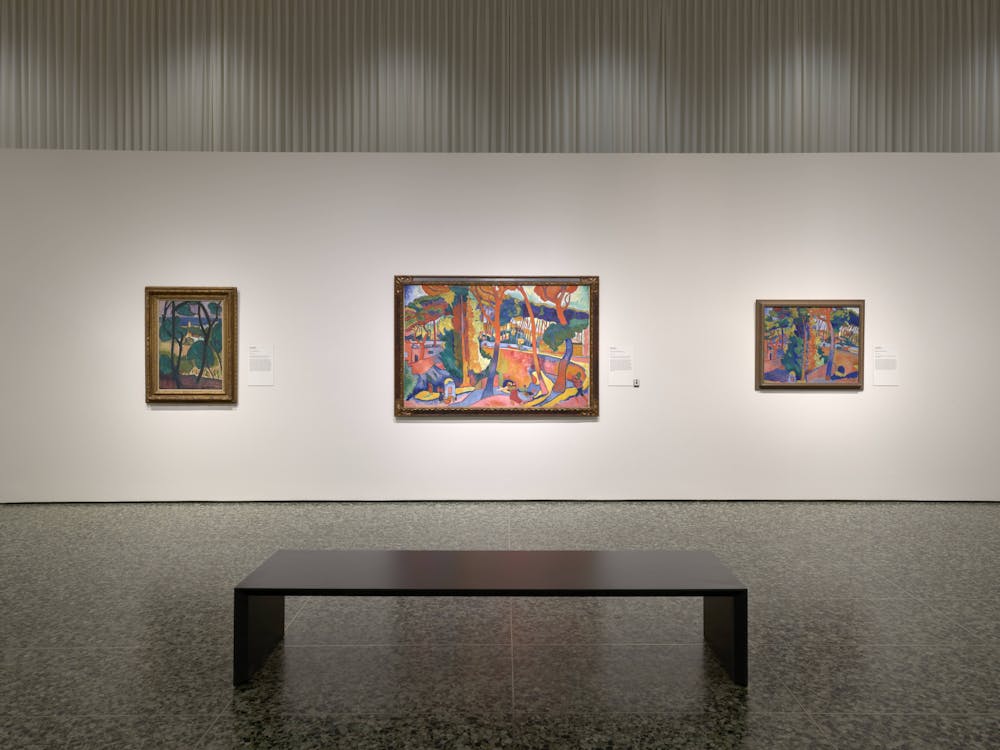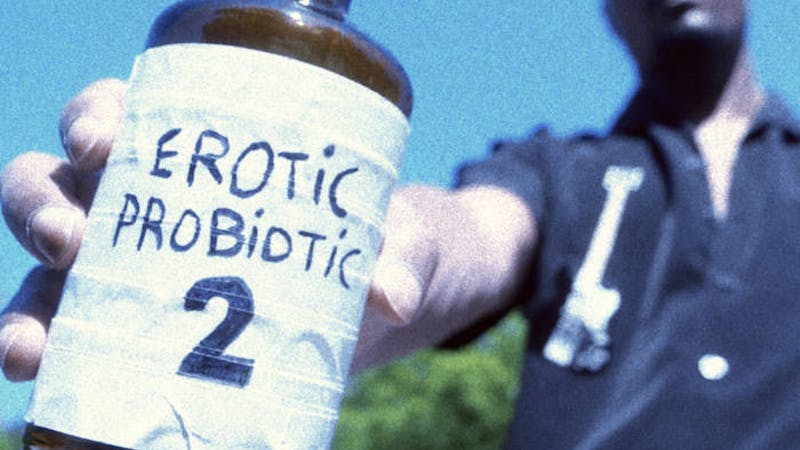MFAH’s ‘Vertigo of Color’ explores a summer of artistic experimentation

Four galleries of art tell the story of previously-unestablished Henri Matisse and André Derain and their shared 1905 summer spent in Collioure, a fishing town in the South of France. Titled “Vertigo of Color: Matisse, Derain, and the Origins of Fauvism,” the exhibit opened Feb. 25 at the Museum of Fine Arts Houston.
The galleries provide a glimpse into how Matisse and Derain reimagined the use of color in paintings at Collioure, birthing a new stylistic movement and sending shockwaves through the art world.
According to Ann Dumas, the exhibit’s curator, the artists’ rapture at the intense quality of sunlight in Collioure drove their creative experimentation throughout their nine-week tenure in the town.
“You can really see, in these works, the excitement they were getting from the force of the Southern light,” Dumas said. “Matisse was just bowled over by the sheer brightness of it.”
Both Matisse and Derain display a unique palette of pink, orange, yellow, green and blue, unrealistically vibrant in their hues. Beyond this saturation, their unnatural employment of color — such as Derain’s red sailboats in “Fishing Boat” or Matisse’s pink seawater in “Open Window” — made their works especially striking, according to Dumas.
“Neither artist felt obliged or restrained to use color naturalistically,” Dumas said. “Color itself becomes a force in the works, irrespective of what hues they were actually seeing.”
The first gallery consists of Matisse’s and Derain’s portraits of one another, as well as a large collection of Derain’s paintings from Collioure. The second gallery comprises primarily Matisse’s works from the summer. Despite the cohesive style of unintuitive color and untamed brush strokes the artists shared, Dumas said they each employed distinct gazes with which they viewed Collioure.
Derain was enamored with the port of Collioure, reflected in the numerous paintings of sailboats exhibited in the first gallery. Matisse focused more on nature, and explored different mediums such as watercolor and ink, often opting for quicker sketches rather than completed compositions.
“Their approaches were very different,” Dumas said. “Derain usually stuck to his paint … [Matisse] had a different project in mind. Many of his works served as proprietary studies for his larger works back in his Paris studio.”
The third gallery of the exhibition is largely dedicated to depictions of Matisse’s wife, Amélie. Matisse’s family accompanied him to Collioure, and Amélie Matisse modeled often for both her husband and Derain, a fact exhibited clearly by their numerous portraits of her, distinguished among the abstract landscapes by her blue and white robe. The final gallery comprises some of the artists’ works after Collioure, including Derain’s “The Turning Road,” a vast painting from 1906 aptly displaying the techniques he refined in Collioure.
“It’s one of the greatest masterpieces of the Fauvist movement,” Dumas said.
Also incorporated in the exhibition is documentation of critics’ reactions to both artists’ revealing of their groundbreaking works at the Salon, one of the most prestigious art exhibitions in Western Europe. Despite the cheerful hues of their experimentations and serenity of their surroundings, Matisse and Derain were both plagued with anxieties and self-doubt during their time in Collioure.
“This color has messed me up. I’ve let myself go with color for color’s sake. I’ve lost all my old qualities,” Derain wrote in a letter to fellow artist Maurice de Vlaminck.
Correspondence of both Derain and Matisse, included in the “Vertigo of Color” catalog, revealed a tension between the artists’ enjoyment of capturing their surroundings and internal conflict over their daring methods.
Indeed, the artists’ anxieties were not unfounded. Matisse and Derain received incredibly harsh criticism and outrage at the hands of critics following the display of their works at the Salon. Their untamed brushstrokes and unorthodox use of color prompted one journalist to decry the artists as “fauves” (French for “wild beasts”). The disparagement would eventually evolve into the title of the popular art movement characterized by the very imaginative qualities that the critics had abhorred — known today as Fauvism.
“They were very hurt by it … the extremely violent criticism,” Dumas said. “But, it turned out the attention it gave them … earned [Matisse and Derain] some of their greatest patrons and recognition.”
According to Dumas, Fauvism, which gained traction among artists despite its polarizing nature among critics, significantly influenced later notable movements, such as the rise of abstraction.
“[Matisse and Derain] really sowed the seeds for artists like Jackson Pollock,” Dumas said. “Abstraction wouldn’t have existed without Fauvism.”
“Vertigo of Color,” which made its American debut at the Metropolitan Museum of Art in New York in October 2023, will be on view at the Museum of Fine Arts until May 27. Stepping through the galleries of brightly-colored and unconventional renderings of the Collioure landscapes will reveal a complex narrative of artistic innovation by two young artists on the cusp of worldwide distinction: an origin story of Fauvism.
“They really opened up doors for artists in the next generations to be much more experimental with colors and techniques,” Dumas said. “Color as a force … has a fantastic impact.”
More from The Rice Thresher

Review: “Harry Potter and the Goblet of Fire” in Concert with Houston Symphony
I was too young to catch the Harry Potter films in theaters when they first came out, but I still remember my earliest encounter with the series. After racing through the books in second grade, I ran straight to the library to check out the DVDs, clutching them like they were sacred artifacts. Even on a small screen, they felt magical, like the world was opening a secret door just for me.

A Texan’s Lollapalooza survival guide 2025
Unfamiliar with public transit or walkable streets? Terrified of skyscrapers taller than any medical center building? Fear not. This lifelong (for all intents and purposes) Texan was technically born in the Chicago area and is here to keep you alive, hydrated and — ideally — in possession of all your belongings during Lollapalooza. Grant Park opens its gates July 31 through Aug. 3 for Lollapalooza’s annual marathon of music, heat and inevitable port-a-potty searching. Pack your reusable bottle, channel some “Culture of Care” and hit the rail.

7 lesser-known artists to check out at Lollapalooza!
Grant Park’s headliners will draw the masses, but the real bragging rights come from catching tomorrow’s favorites before your roommate has added them to the group Spotify. There are so many great artists performing, and if you float from stage to stage, you just may find your next musical obsession. Here are some possible contenders:

Please note All comments are eligible for publication by The Rice Thresher.